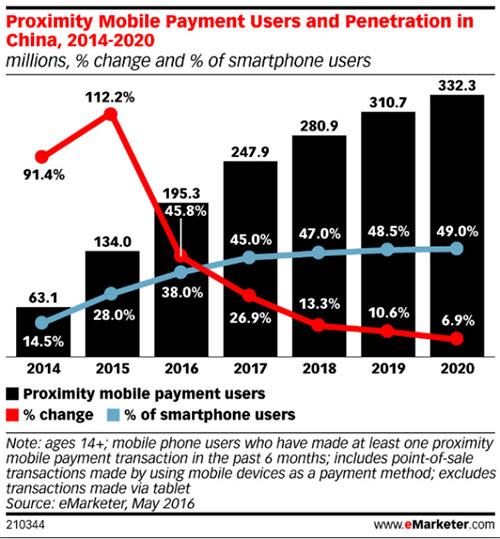Smartphone Payment is changing the way of people’s life now .Everyone in Beijing can now get on to public transport with the tap of a smartphone — everyone except Apple iPhone users. Beijing’s public transport payments company Yikatong has launched an app that allows most Android smartphone users to pay for journeys by tapping their smartphone rather than their transport card, starting on Monday. The upgrade fits well with the Chinese habit of using smartphones to pay for anything from utility bills to street food, and will serve as a template for transport systems across China. As such, the exclusion of iPhone is a blow for Apple.
The event shows just how badly the technology group is being beaten in mobile payments in China, the world’s largest with an estimated $8.8tn in transactions in 2016, according to iResearch. Apple was locked out of the Beijing public transit payment system because of its policy of reserving contactless payment — that is, the ability to pay for something by waving a phone in front of a terminal — to its Apple Pay app, rather than granting access to to third-party apps such as Yikatong’s, or popular payment systems such as Tencent’s WeChat Pay and Alibaba’s Alipay by working for barcode scanner reader .which installed in the turnstile for metro .such as the Rakinda company RD4500 series reader ,which are the best and correct choice for metro application for mobile payment .
Android-based competitors such as Samsung, Huawei and Xiaomi do allow contactless payment that links to these apps. “[Apple’s policy] is counterproductive,” said Mark Natkin, managing director of Marbridge Consulting, a Beijing-based tech consultancy. “It potentially locks them out of a variety of initiatives, particularly the major push in China to introduce smart city initiatives.” WeChat Pay and Alipay are integrated into social messaging and ecommerce apps offered by Tencent and Alibaba, and are therefore extremely popular. Moreover, Tencent and Alibaba’s payment systems involve scanning a QR code with a phone camera, rather than tapping something to make a payment. Chinese consumers are just more used to this system of code scanning, rather than Apple’s system of waving a phone in front of a cash register. The upshot is that Apple, one of the first to offer contactless transactions in China, has been relegated to less than 1 per cent of China’s mobile payments market and is losing markets that embrace contactless payment. “It’s very ironic that iPhones are excluded [from the Beijing public-transit upgrade] given that Apple Pay is one of the trailblazers for [contactless] payments in China,” said Matthew Brennan, co-founder of digital marketing agency China Channel.

Apple’s offering, which was launched in China in early 2016, has not made it into the top 10 payment apps in the country. iPhone sales in Greater China fell during the past year while local competitors using the Android operating system stormed ahead. Apple’s approach of guarding its contactless payment technology has not worked well in China, where Apple Pay occupies a small segment of the payments market and thus third-party app developers — such as Yikatong — can go ahead and develop alternative payment systems without co-operation from Apple. “The vast majority of subway travellers are going to be using Android phones. It totally makes sense to prioritise those users,” added Mr Brennan. * This article has been amended since original publication to correct the spelling of the name of Marbridge Consulting’s managing director, Mark Natkin
RAKINDA engaged in barcode technology research and development for more than 17 years, we have a mature R & D team and overseas markets, we can help you quickly and easily realize unattended dream.
Copyright © Shenzhen Rakinda Technologies Co., Ltd. All Rights Reserved
Technical Support: 